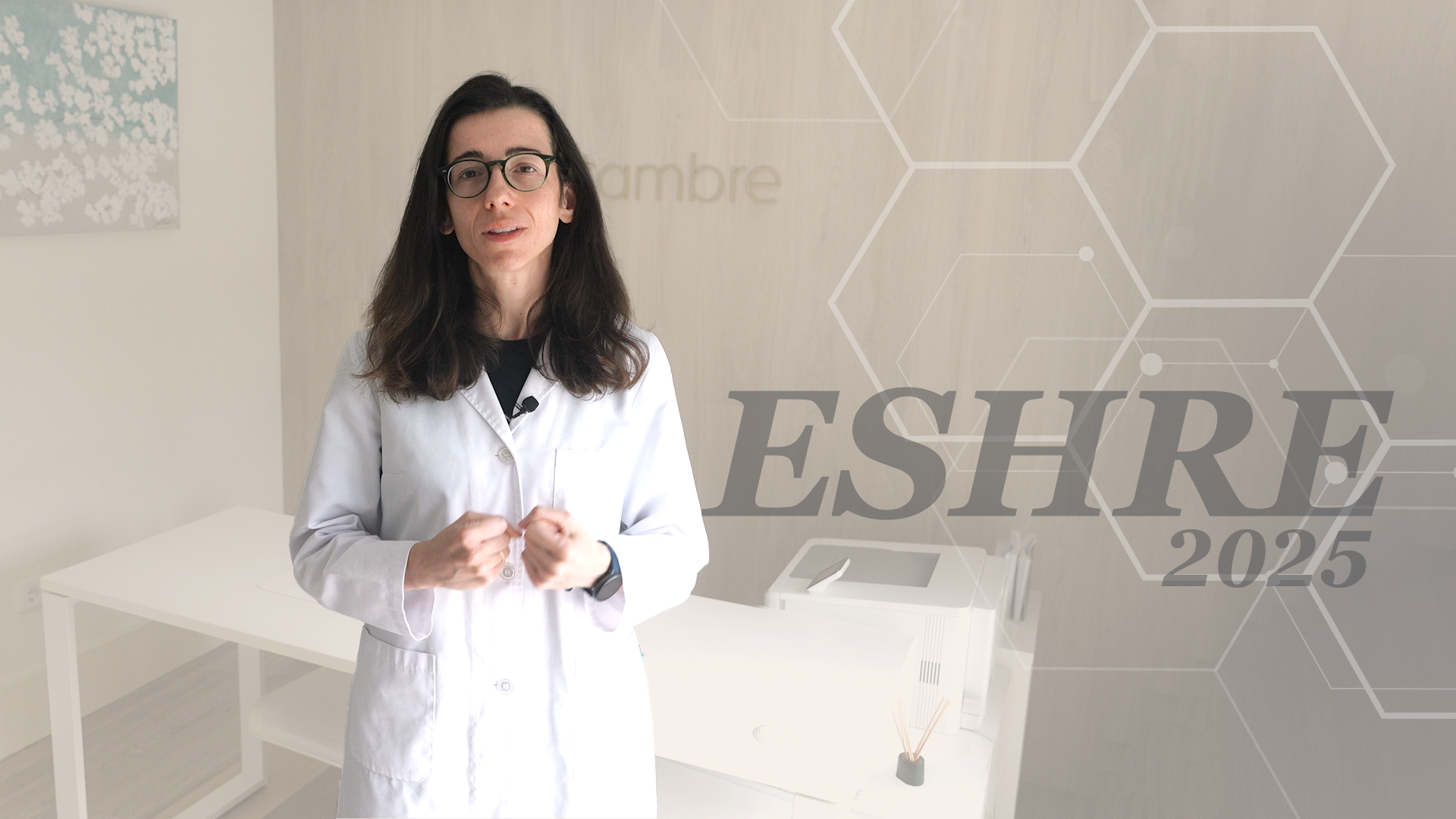blog tambre
What changes have there been in oocyte vitrification? Tambre analyses eight years of data in a study for ESHRE 2025

Table of contents
A study by Fundación Tambre reveals key trends in fertility preservation
Preserving fertility is no longer just a possibility, it is a conscious decision that more and more women are making to leave the option of becoming a mother in the future open. But what do we really know about how egg vitrification has evolved in recent years?
In a context where demand for preservation treatments is growing and diversifying, having objective and up-to-date data is essential to guide patients and adapt clinical strategies. To this end, at the ESHRE 2025 conference, Tambre presented a pioneering study that rigorously analyses how patient profiles and clinical outcomes in oocyte vitrification treatments have evolved between 2015 and 2023.
The research, led by Dr Ángela Llaneza and carried out by Fundación Tambre, analyses one of the largest series of clinical data on egg vitrification collected continuously in a single clinic over eight years.
https://youtu.be/A6qv9WmYyaM?si=icFOBYwT41zuTsbl
What did the research team aim to determine?
The premise was clear: to understand how egg vitrification has changed in almost a decade. Has the age of patients changed? What trends are observed in terms of ovarian reserve, oocyte survival rate or international profile? What implications do these changes have for current counselling?
How was the study done?
This retrospective study included 936 patients who vitrified eggs at Tambre between 2015 and 2023. Key variables were analysed, such as:
Este estudio retrospectivo incluyó a 936 pacientes que vitrificaron óvulos en Tambre entre 2015 y 2023. Y se analizaron variables clave como:
- Nationality
- Average age at the time of vitrification
- Ovarian reserve markers (AMH and AFC)
- Number of eggs vitrified and subsequently thawed
- Oocyte post-thawing survival rate
Statistical analysis was used to understand how clinical profiles and outcomes evolved year after year.
What do the data reveal?
The results reflect a constant and significant transformation in the way patients access egg vitrification and in the resulting outcomes. Through statistical analysis, the Tambre team has been able to identify clear patterns and relationships between variables such as age, ovarian reserve, nationality and oocyte survival rate. Here are some of the key findings of the study:
Sustained growth in the number of patients
In 2015, 35 cases were recorded. In 2023, the total rose to 306 patients. This increase reflects greater social awareness of fertility preservation, both among young women and international patients.
Decrease in average age
The average age of vitrification decreased by 0.30 years for each year analysed, standing at an average of 36.4 years throughout the period. This reinforces a key message in fertility: the earlier the eggs are vitrified, the greater the chances of future success.
Increase in the number of vitrified eggs
From 248 vitrified oocytes in 2015, the number rose to 910 in 2023, an improvement that reflects not only greater demand but also greater efficiency and quality in procedures.
Relationship between ovarian reserve and survival
In the group of women aged between 37 and 40, differences were observed in egg survival after thawing depending on age and ovarian reserve. Women with better reserves, as assessed by AMH and AFC markers, tended to achieve better results. These data confirm the value of these markers in guiding each woman on the best time to vitrify her eggs and what results she can expect.
Preventive, non-urgent vitrification
A relevant fact is that only 5.6% of patients in 2023 had started using their preserved eggs at the end of the study.
In 2015, this percentage was 45.7%. This indicates that vitrification is, above all, a preventive strategy, chosen calmly with a view to the future.
What implications does this study have for patients?
This analysis allows us to offer advice based on real data: freezing eggs at an earlier age improves oocyte survival and increases the chances of future success.
The study also confirms the value of tools such as AMH and AFC markers in helping each woman make an informed decision.
In addition, it highlights a key trend: more and more international patients are trusting Tambre to preserve their fertility. This underlines the clinic’s international reputation and its ability to offer accessible, humane and scientific care to women from all over the world.
The value of long-term data
One of the main contributions of this study is its long-term nature. The systematic collection and analysis of data over eight years provides a level of reliability that is rare in the scientific literature on vitrification.
This approach not only improves current medical practice, but also allows us to better anticipate future scenarios, refine protocols and design more effective preservation strategies.
One step closer to free, informed and accessible fertility
Preserving fertility is not just a medical technique. It is a personal, intimate decision that is often postponed. Therefore, supporting that decision with data, science and human support is part of our commitment. Tambre’s scientific director and lead author of the study, Dr Ángela Llaneza, explains that ‘understanding how egg vitrification has evolved allows us to better support each woman in her decision. Because every egg preserved is an opportunity for the future’.
At Tambre, looking to the future also means taking care of it. And every piece of data we collect has a single goal: to help you decide freely.
Trends in Oocyte Vitrification: Patient Demographics and Outcomes from 2015 to 2023.
Á. Llaneza, A. Bullido, C. Andrés, S. Cortés, L. Serrano, J.A. Horcajadas

